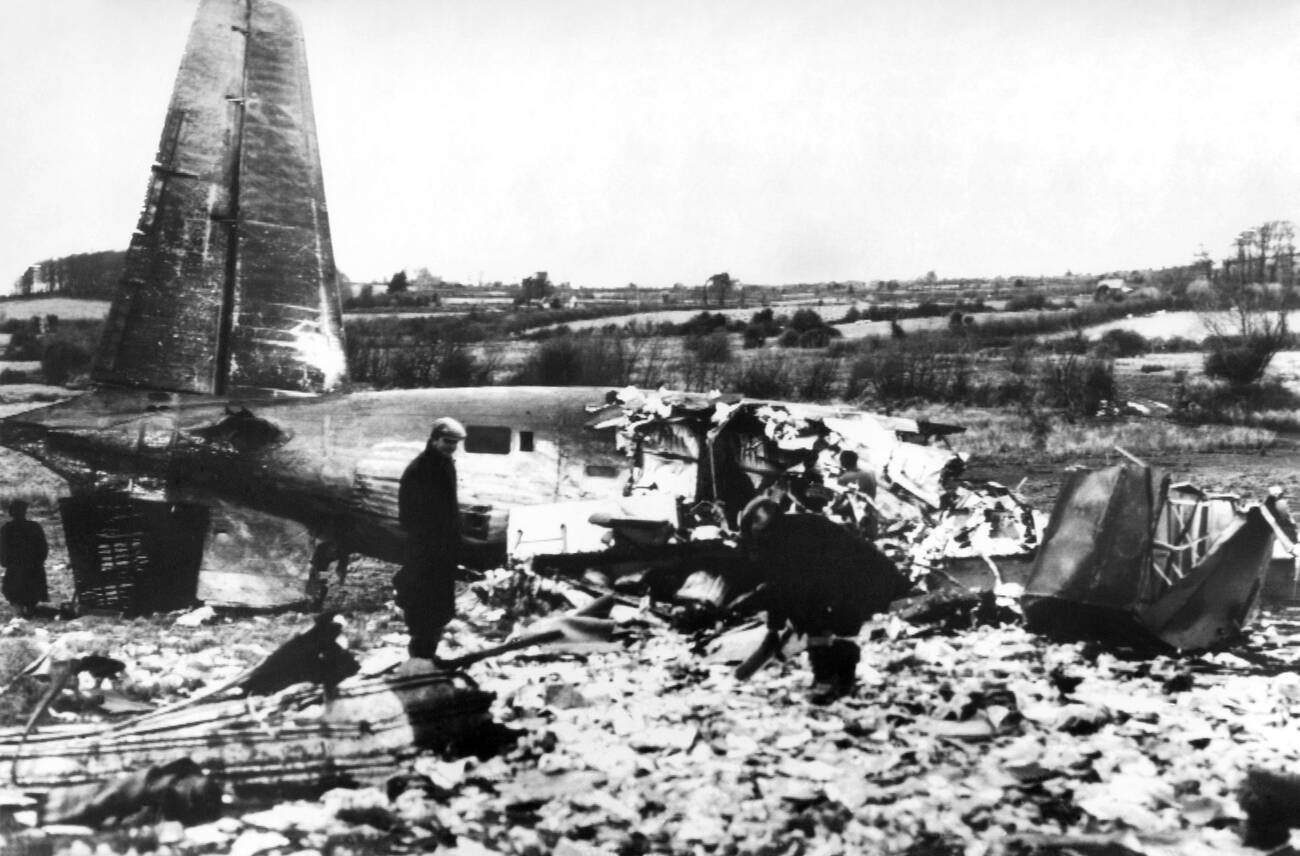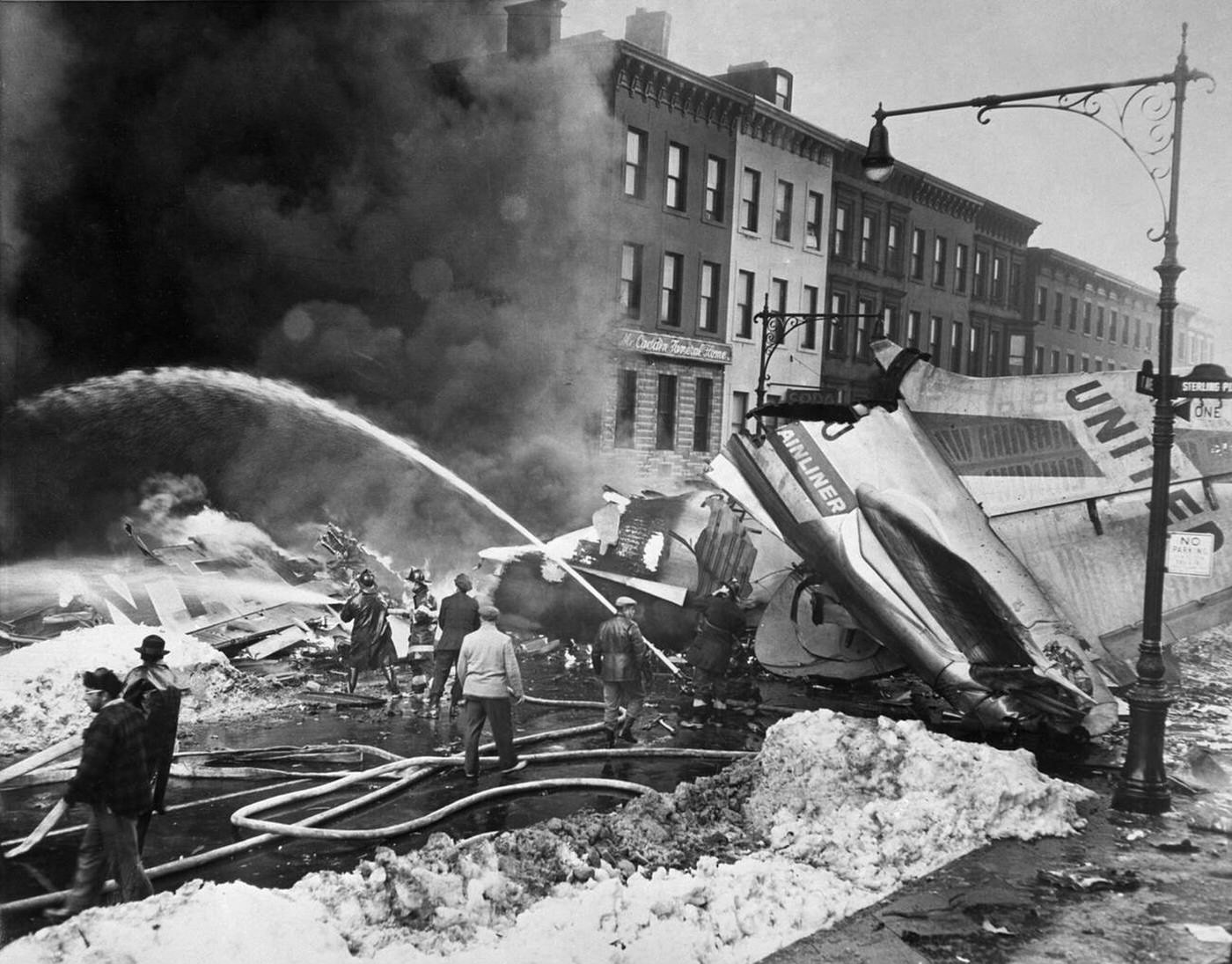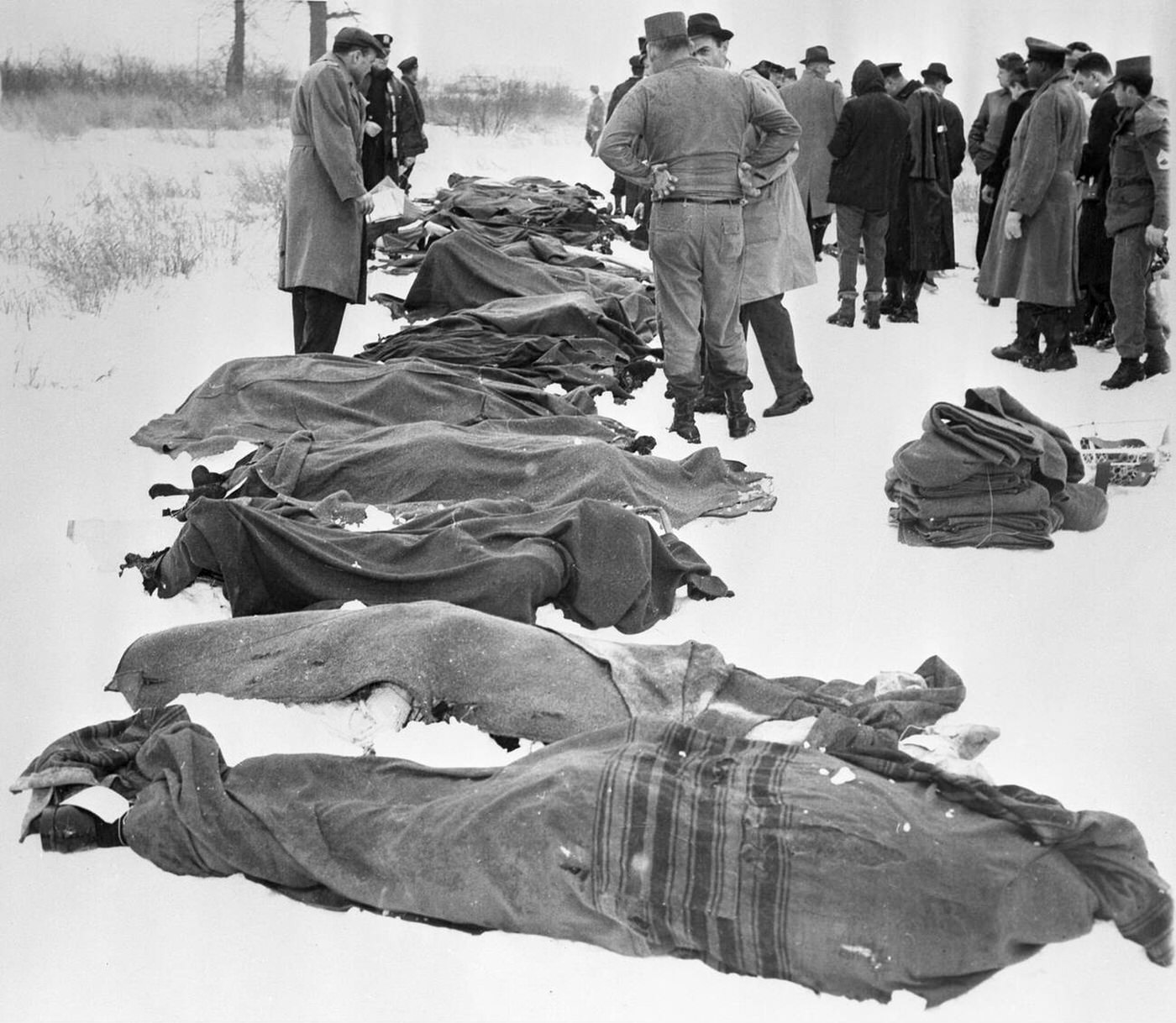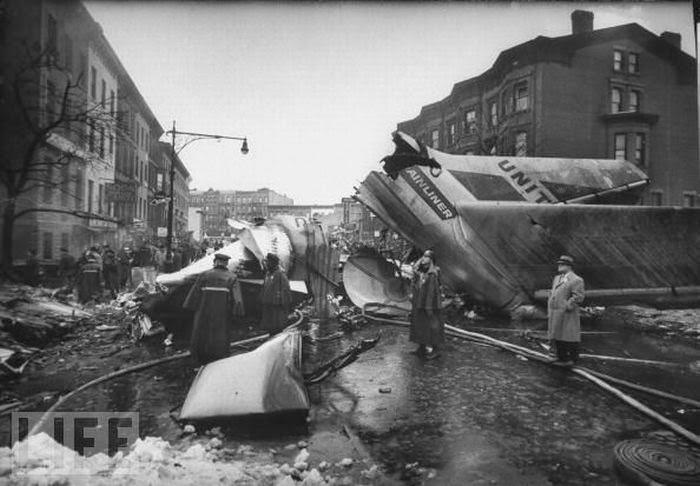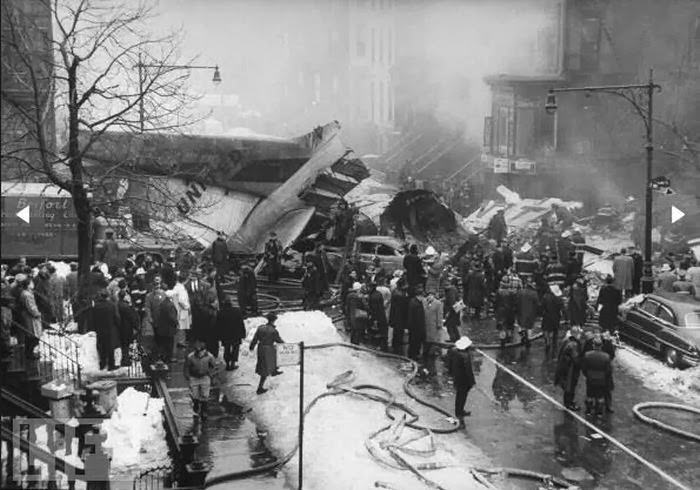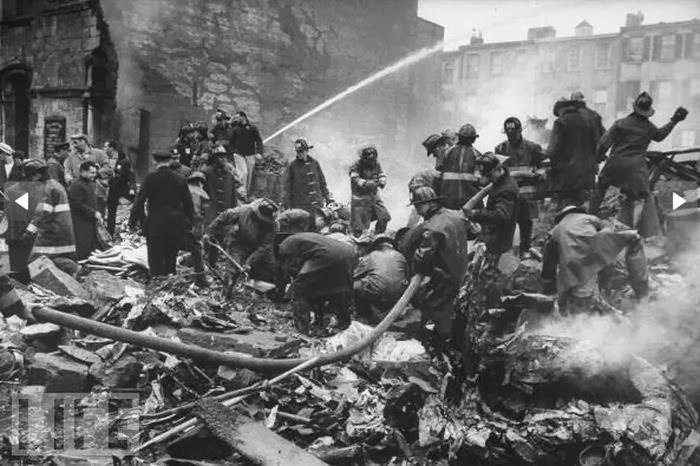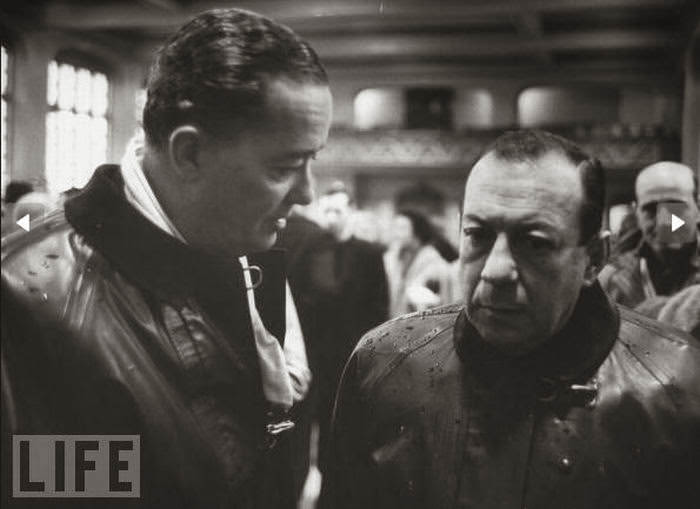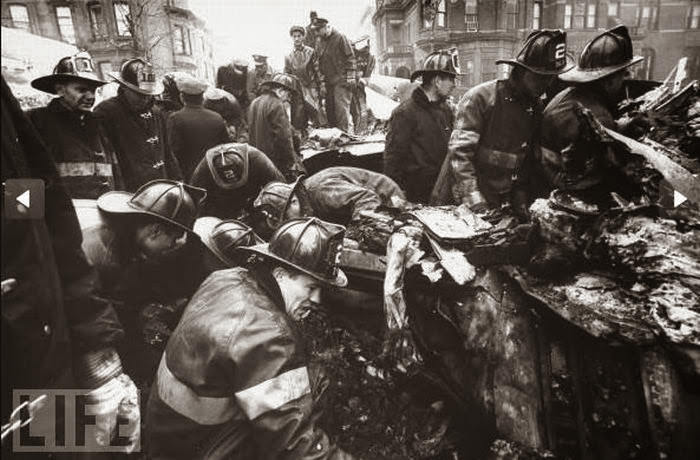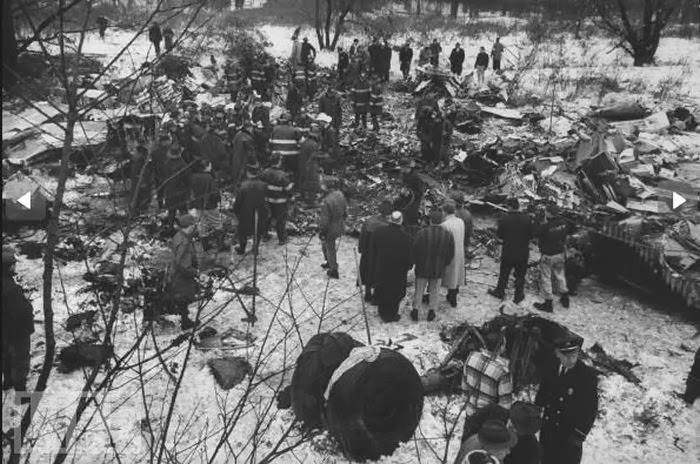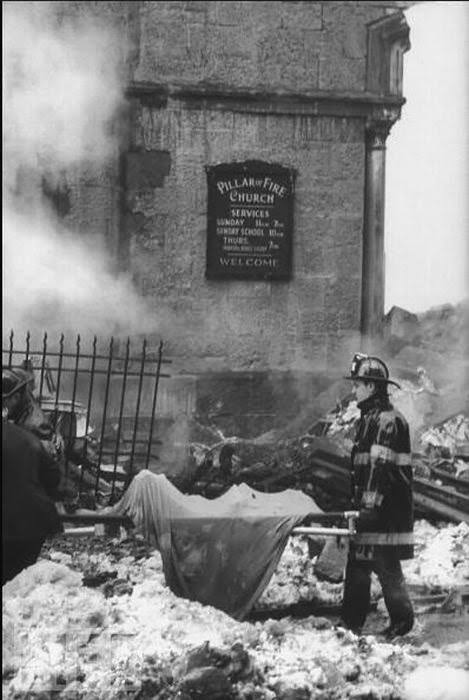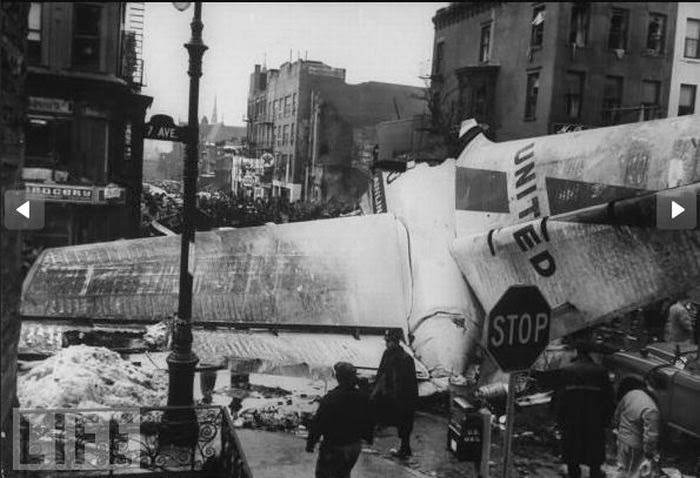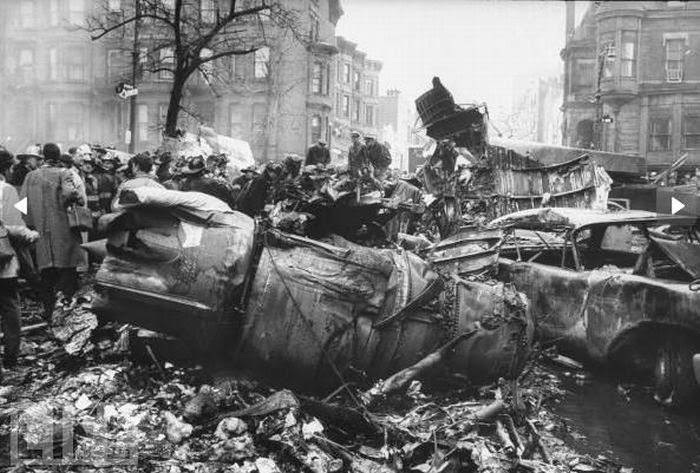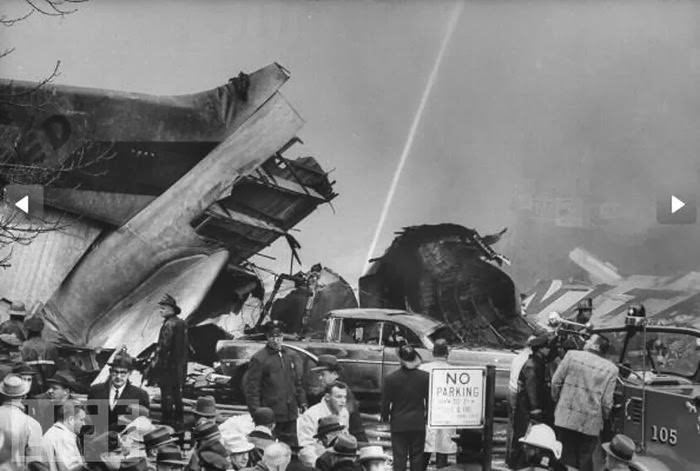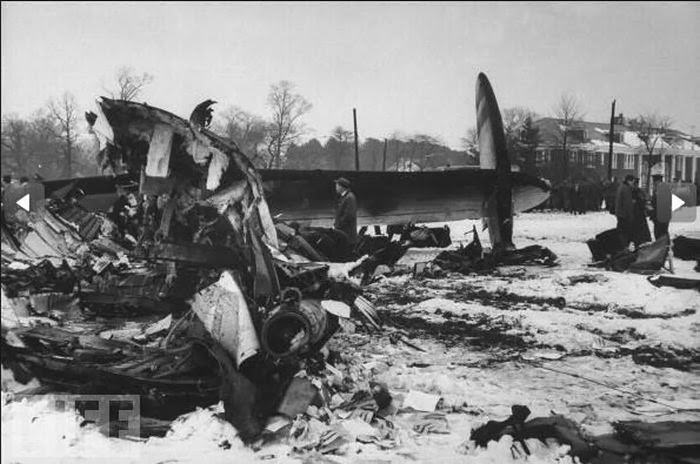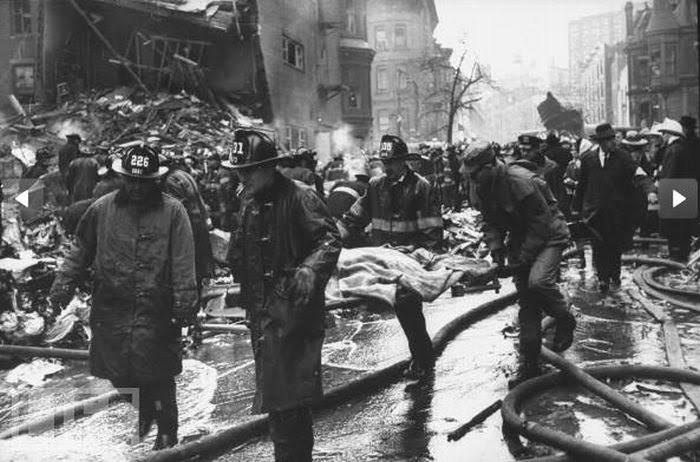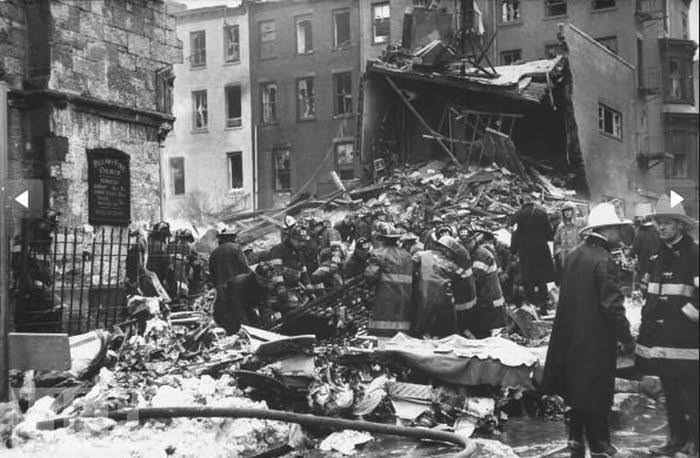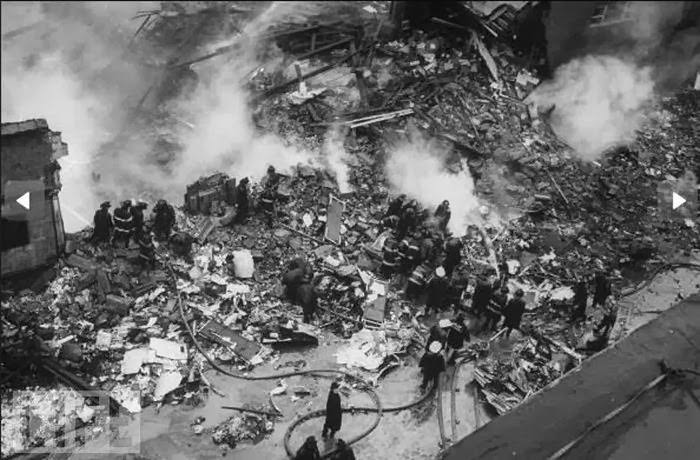On the morning of Friday, December 16, 1960, a dense, slushy snow fell over New York City, cloaking the metropolis in a layer of white and gray. In the skies above, two airliners were making their final approaches to different city airports, their passengers anticipating arrivals for business, family visits, and the upcoming Christmas holiday.
United Airlines Flight 826 was a modern Douglas DC-8 jet, a powerful aircraft for its time. It had departed from O’Hare International Airport in Chicago and was bound for Idlewild Airport, which is now John F. Kennedy International Airport, in Queens. Onboard were 77 passengers and 7 crew members. Many were heading home for the holidays.
Simultaneously, Trans World Airlines Flight 266 was on its final leg from Dayton and Columbus, Ohio, heading for LaGuardia Airport, also in Queens. This aircraft was a Lockheed L-1049 Super Constellation, a propeller-driven plane known for its distinctive triple-tail design. It carried 39 passengers and a crew of five.
The weather was a significant factor. The thick, snowy conditions severely limited visibility for pilots and made navigation more reliant on instruments and instructions from air traffic controllers on the ground. Air traffic was heavy, as is typical for a Friday before a major holiday. Controllers were carefully guiding planes through the crowded airspace.
Read more
Because of the congestion and poor weather, the crew of the United DC-8 was instructed to enter a holding pattern. This is a standard procedure where an aircraft flies in an oval-shaped route over a specific navigational landmark until it is cleared to proceed. The designated holding point for Flight 826 was a radio beacon located near Colts Neck, New Jersey. The pilots were expected to reduce speed and circle at an altitude of 5,000 feet.
A critical failure occurred aboard the United jet. One of its VOR radio navigation receivers was not working, which made it harder for the pilots to pinpoint their exact location. Instead of slowing down and entering the looping pattern over Colts Neck, the pilots overshot the mark. The powerful DC-8 continued at a speed of more than 500 miles per hour, flying twelve miles off its intended course and directly into a busy airway used by planes approaching LaGuardia.
At 10:33 AM, high in the gray skies above Staten Island, the paths of the two airliners intersected. The left wing of the speeding United jet sliced into the fuselage of the TWA Super Constellation. The collision was catastrophic. The TWA plane was torn apart almost instantly, erupting in a fireball and showering metal debris across the sky.
The remains of TWA Flight 266 fell onto Miller Field, a U.S. Army installation on the New Dorp section of Staten Island. The main wreckage landed in an open area of the base, while smaller pieces rained down on the surrounding neighborhood and the Atlantic Ocean. Military personnel stationed at the base were the first to respond to the crash. There were no survivors among the 44 people on the TWA flight.
The United DC-8, though severely damaged, did not disintegrate. The collision had sheared off its entire right engine, which fell onto a street in Brooklyn, and a large portion of its right wing was gone. Despite the crippling damage, the jet remained in the air for a brief, terrifying period. It flew for eight more miles, descending rapidly over the densely populated borough of Brooklyn.
On the ground in the Park Slope neighborhood, life was proceeding as usual. People were out shopping, children were in school, and men were on the corner of Seventh Avenue and Sterling Place selling Christmas trees. The sound of the crippled jet grew from a distant roar to a deafening scream. The plane came down directly into the heart of the neighborhood. It narrowly missed the St. Augustine’s Academy school, which was filled with hundreds of students.
The DC-8 first struck a series of classic Brooklyn brownstones before plowing directly into the Pillar of Fire Church on Sterling Place. The jet’s fuel tanks, still carrying thousands of gallons of jet fuel, ruptured on impact. A massive explosion followed, sending a mushroom cloud of black smoke and fire high into the air. The blast was so powerful it shook buildings for miles around and shattered windows throughout the neighborhood. Ten brownstone apartment buildings were set on fire, as was the church, which was completely engulfed in flames.
Mrs. Robert Nevin, a resident of the top floor of one of the apartment buildings that was hit, found herself looking at open sky as the roof above her was torn away. The streets below were a scene of chaos and destruction. Wreckage from the plane, personal belongings of the passengers, and Christmas presents that had been in the cargo hold were strewn across the snow-covered pavement.
The collision and subsequent crash in Park Slope killed six people on the ground. Wallace Lewis, the 90-year-old caretaker of the Pillar of Fire Church, was unable to escape the burning building. A man named Charles Cooper, who was out selling Christmas trees, was killed instantly. Another Christmas tree seller, Joseph Colacino, was set on fire and later died from his injuries. The other victims on the ground were a doctor who was walking his dog, a sanitation worker, and a local resident.
In the midst of the flaming wreckage and falling debris, a small figure was seen moving. It was an 11-year-old boy named Stephen Baltz. He had been thrown from the tail section of the United plane onto a snowbank. He was alive. Stephen had been flying alone from his home near Chicago to spend Christmas with relatives in Yonkers.
First responders rushed him to the New York Methodist Hospital. Despite suffering from severe burns and internal injuries from inhaling burning fuel, he was conscious and able to speak with doctors. He described the moments leading up to the disaster. “I saw the snow on the ground,” he recounted. “It looked like a picture out of a fairy book.” He spoke of the sudden explosion and the plane beginning to fall. “People started to scream,” he said. “I held on to my seat and then the plane crashed.” His father, who was waiting at Idlewild Airport, rushed to his son’s bedside. For a brief period, there was hope. The entire city listened for news of the boy’s condition. The following afternoon, however, Stephen Baltz succumbed to his injuries. He was the last of the 84 people aboard United Flight 826 to die.
The emergency response was massive. More than 2,000 police officers and 250 firefighters descended on Park Slope. They faced an inferno fueled by thousands of gallons of jet fuel. The fires were so intense that firefighters battled them for nearly three days in the freezing weather. The crash investigation that followed was the most extensive in aviation history at the time. Investigators meticulously pieced together the sequence of events, using the new technology of a “black box” flight data recorder recovered from the United wreckage to determine the plane’s speed and navigational error. The final death toll for the entire disaster was 134 people.


